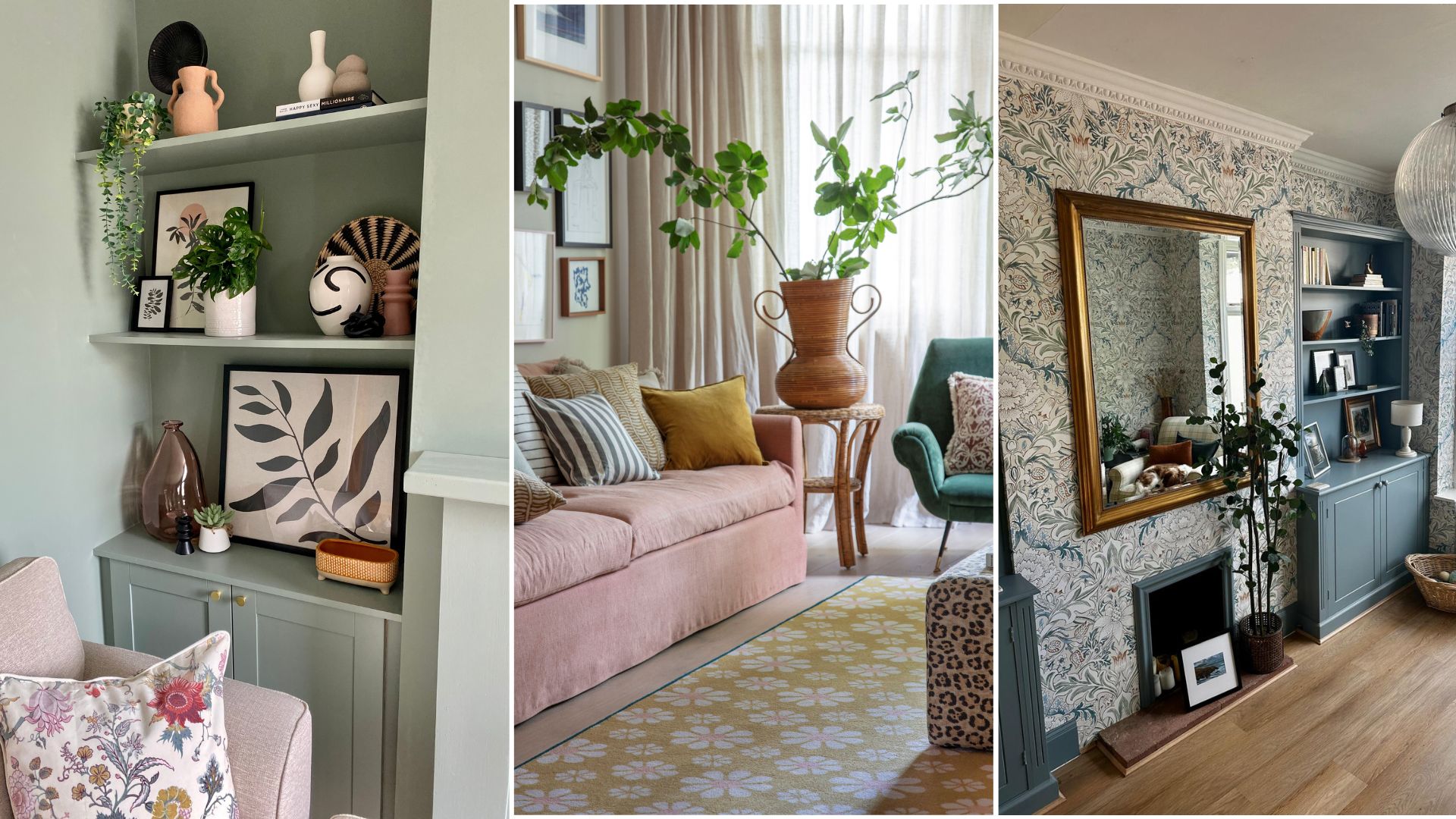
Decorating a room is a bit like cooking a roast dinner. There are lots of different elements to get right, and they all need to come together. You might find the perfect piece of furniture, but will it go with the tone of the floorboards? And what about the rug, curtains and wider accessories?
Then, there are the more practical things to consider, such as creating a functional layout and giving yourself enough storage. Whether transforming your living room on a budget or refreshing a bedroom, the designers at interior design company The Living House say it's best to think about the room as a whole. This invaluable interior design advice is the key to avoiding common interior design mistakes.
Zoom out with your mental wide-angle lens and choose a palette and general vibe, rather than honing in on a specific lamp, corner sofa or bouclé armchair.
We previously shared the best decorating timeline recommended by The Living House designers to help make the process run more smoothly. Below, I've rounded up some other lessons I learnt when working alongside the team.
5 interior design secrets for a stylish, functional space on a budget
Here are their pro tips, go-to furniture items and finishing touches for when it feels like something is missing. Noting these interior designer-approved tips will make a big difference to your space, making your home cosy and even making your home look expensive while on a budget.
1. Never underestimate the power of storage
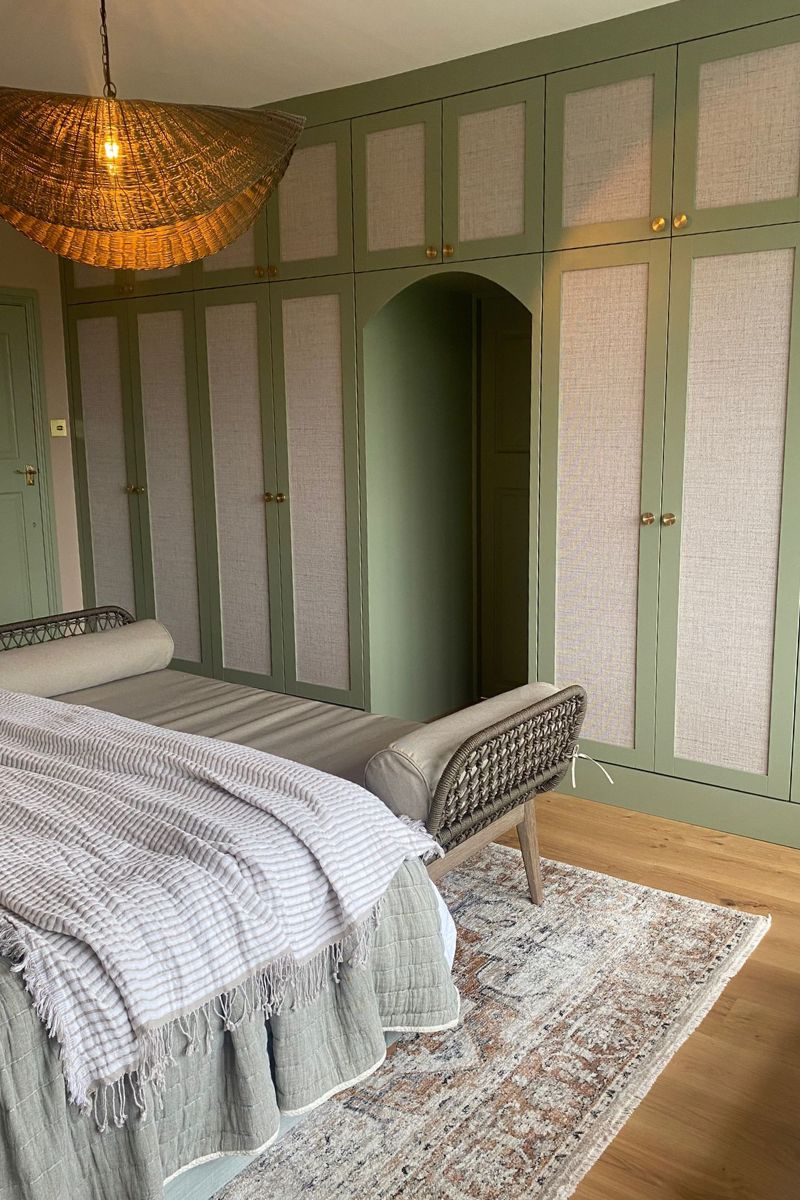
The Living House designers say that storage is a key factor to consider when redecorating a room – arguing that it should be high up on your decorating to-do list along with colour schemes and layout. "Always, always think about your storage as you can never have enough," says Sophie.
"Put it in the forefront of your mind because it's a really important element for making the room look good, and keeping on top of clutter, especially in family homes." We recommend trying the best professional decluttering methods to stay on top of things with ease.
Whether you have kids or live alone, hidden storage is guaranteed to make life easier. You can either go for Marie Kondo minimalism or get yourself plenty of closed storage to hide things away. It will mean keeping your home organised becomes so much more straightforward.
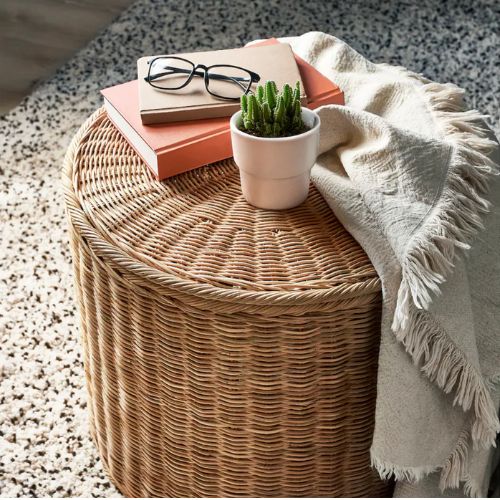
RRP: £70 | This footstool with storage is one of the go-to storage pieces The Living House designers use in living room schemes. It's made of handmade rattan and has lots of space inside, plus it's sturdy enough to sit on.
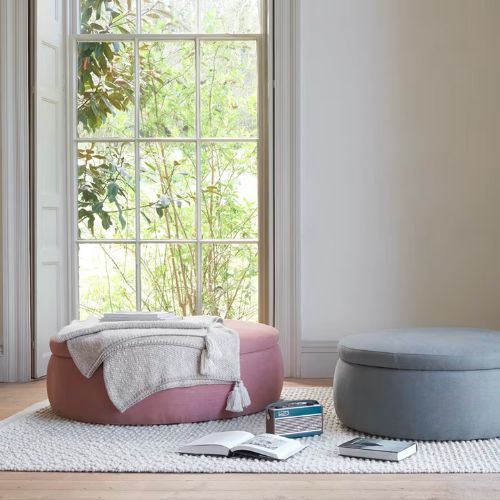
RRP: £645 | The Pot Pie Footstool from Loaf has handy hidden storage and is one that The Living House have used in lots of living room design schemes. It's a family-sized footstool and an extra seat, with storage space beneath. We're big fans of the low profile and it comes in a range of fabrics.
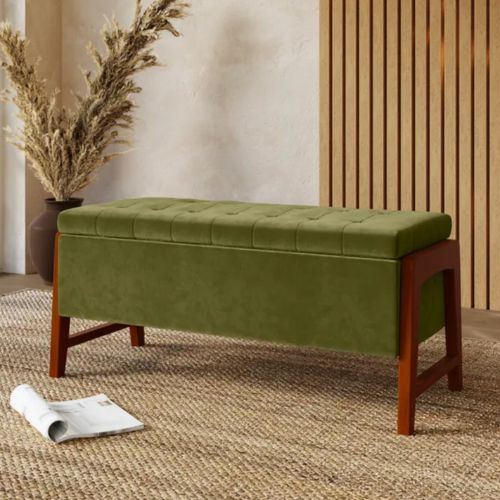
RRP: £119 | The Annie velvet ottoman at Dunelm has a generous interior to help you keep your space neat and organised. Place at the end of a bed or in the hallway to provide stylish storage and seating.
2. Utilise downloadable art
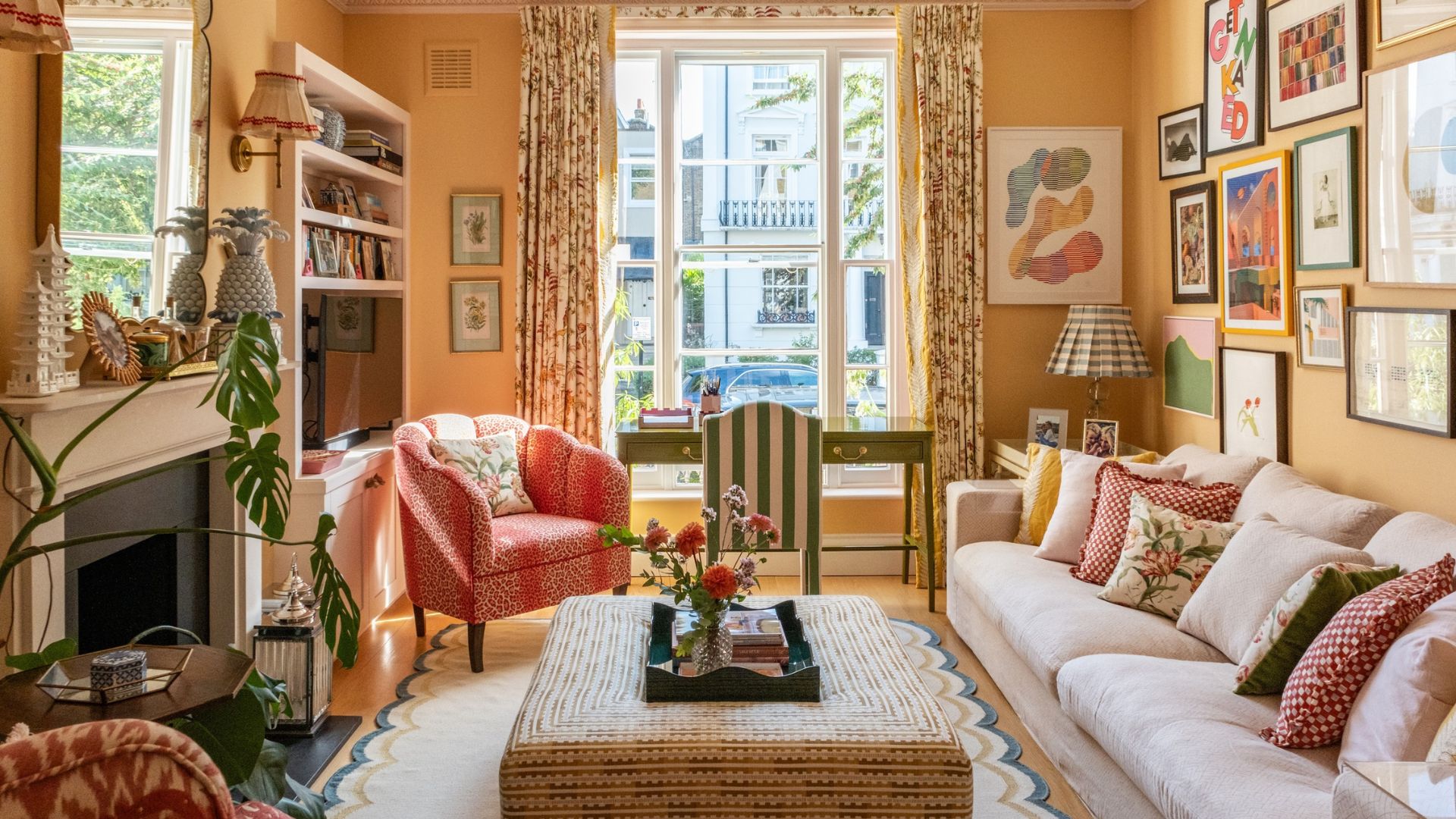
The Living House's designer Catherine said that when describing the kind of style and feel they want, clients often caveat it with, "But we don't want it to look like a show home". We all want our homes to feel characterful, lived in, and able to withstand the bumps and scratches of everyday life.
One great way to bring that timeless, beautiful yet practical feeling is to combine heirlooms with a more contemporary style. In other words, having a mixture of old and new.
The Living House's interior designers recommend sourcing digital, downloadable art from Etsy, particularly if you want to add something vintage and make the room look more transitional. Downloadable art is inexpensive and can add a lot of history to a space, without the price tag of an original Monet.
RRP: £6.34 | Printable wall art is a great way to elevate your walls into artistic focal points and express your style. Display this coastal, floral print as a standalone statement or combined with other art pieces in a gallery display.
RRP: £5.71 | This instant download of a wildflower meadow is an affordable way to add colour and character to empty walls. The vintage country landscape has muted spring colours and would look lovely in a bedroom.
RRP: £3.20 | This is a high-resolution digital copy of Capucine (nasturtium) from La Plante et ses Applications Ornementales (1896) illustrated by Maurice Pillard Verneuil. It can be printed, framed and on your wall in no time without any shipping costs, saving money and creating a great DIY project.
3. Take samples with you when shopping
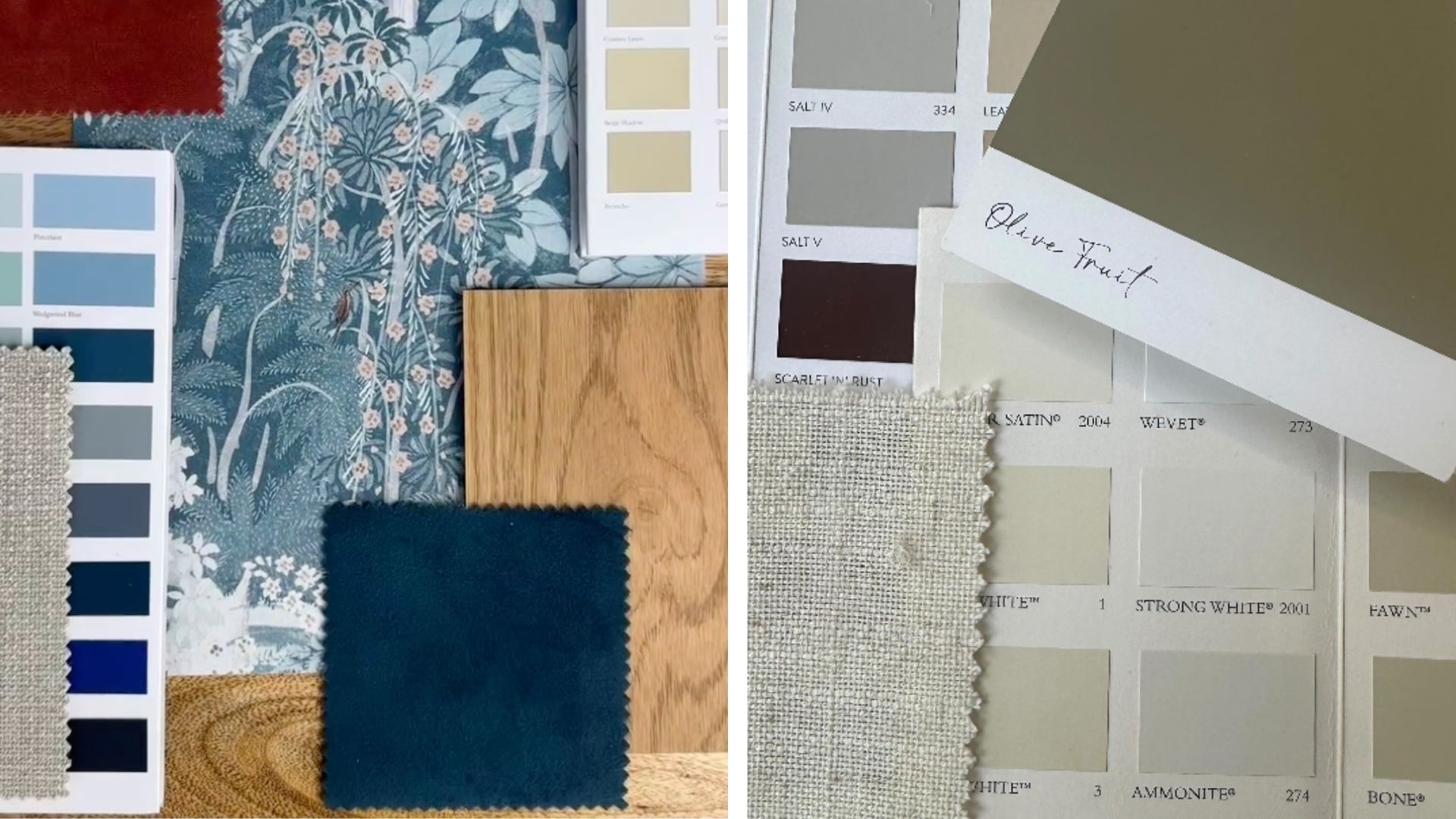
"Always take your samples around with you when shopping," says Sophie. "It can really help to see how different colours, tones and textures look together." Getting plenty of samples for the wallpaper, fabric and paint that you are considering, and keeping them to hand, will take the guesswork out of purchases.
It might mean carrying around pieces of carpet in your bag, but it will make life easier, whether you're choosing rugs or deciding on paints and living room colour combinations. Carrying samples with you when browsing decor, cushions and so on ultimately means you're less likely to buy something for your room and realise that it doesn't look right when you come home.
You might have chosen a scheme of neutrals, blue and coral, but there are so many different tones that look similar. If you have the samples with you, you can keep the scheme tight and intentional, resulting in a space that looks well-designed.
4. Swivel chairs free up your layout
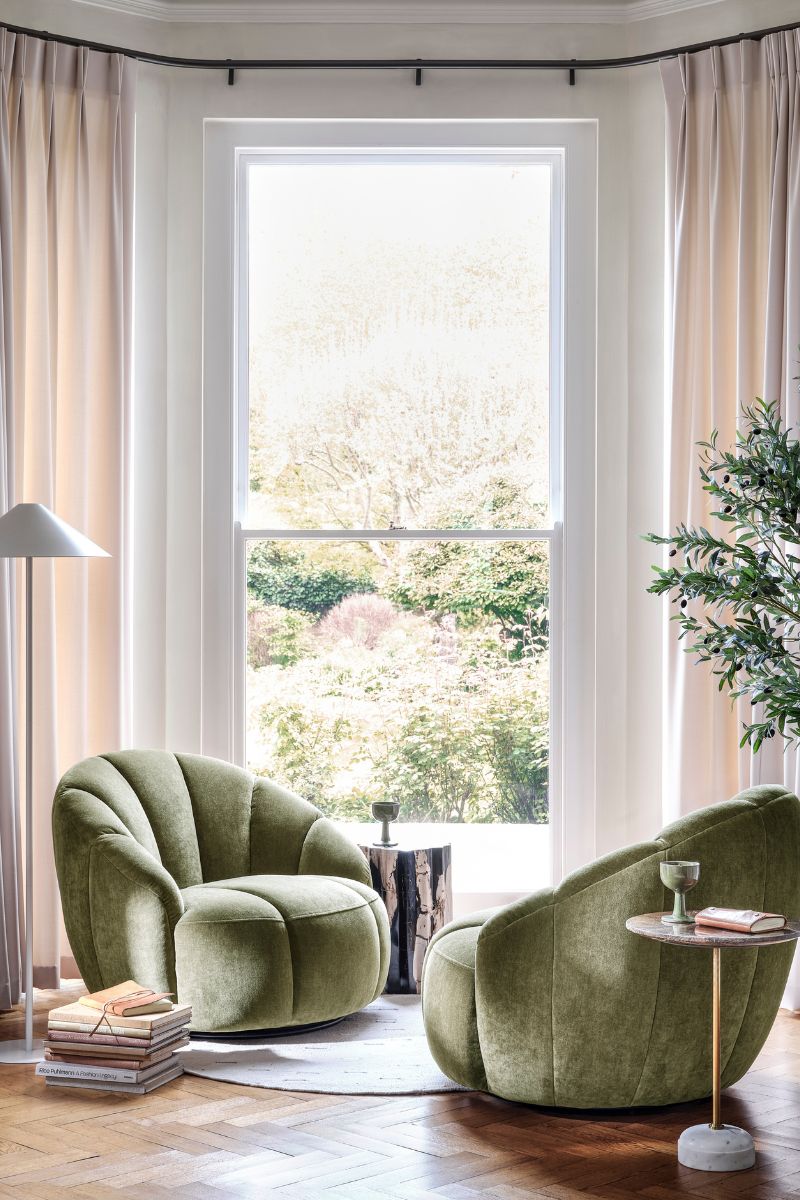
If you can, go for a chair that swivels. "We often recommend swivel chairs because they free up your layout and can make a room more functional and sociable," says Sophie. "It's such a simple consideration, but one that's often overlooked and it can make your room work much harder."
For example, in a living room, you might have a sofa and two armchairs facing each other. When hosting guests, you want the furniture facing each other, creating a conversation area, but day to day, you might want a chair to face the other way to enjoy a view out of the window or get a better view of the TV.
Swivel chairs are also a good way to decorate empty corners and there are lots of great options available – below, I've rounded up some of my current favourites.
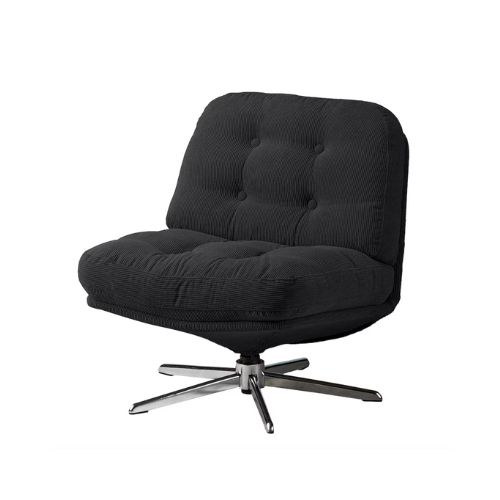
RRP: £199 | Ikea launched this swivel armchair back in 1967 catalogue with the name MILA. Then, just like now, it had a reclined sitting position that's naturally relaxing for the entire body. Also available in green, it's a convenient and comfortable extra seat with a stylishly low profile.
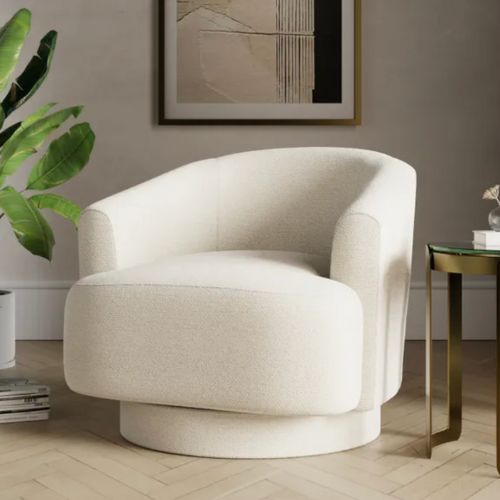
RRP: £249 | The Carmen curved chunky chenille swivel chair from Dunelm has a nice organic shape and comes well reviewed. The ivory colour gives chic hotel vibes, and Dunelm also sells a matching footstool.
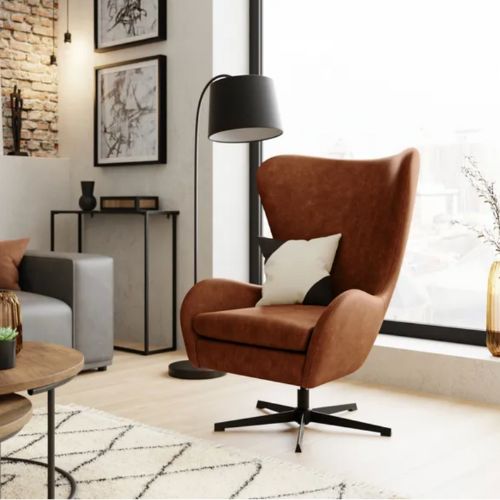
RRP: £349 | This armchair has a modern look with faux leather upholstery in a tan shade, and black metal legs. Its swivel feature makes it super versatile, allowing you to easily adjust your position or engage with your surroundings.
5. You can never have too many plants
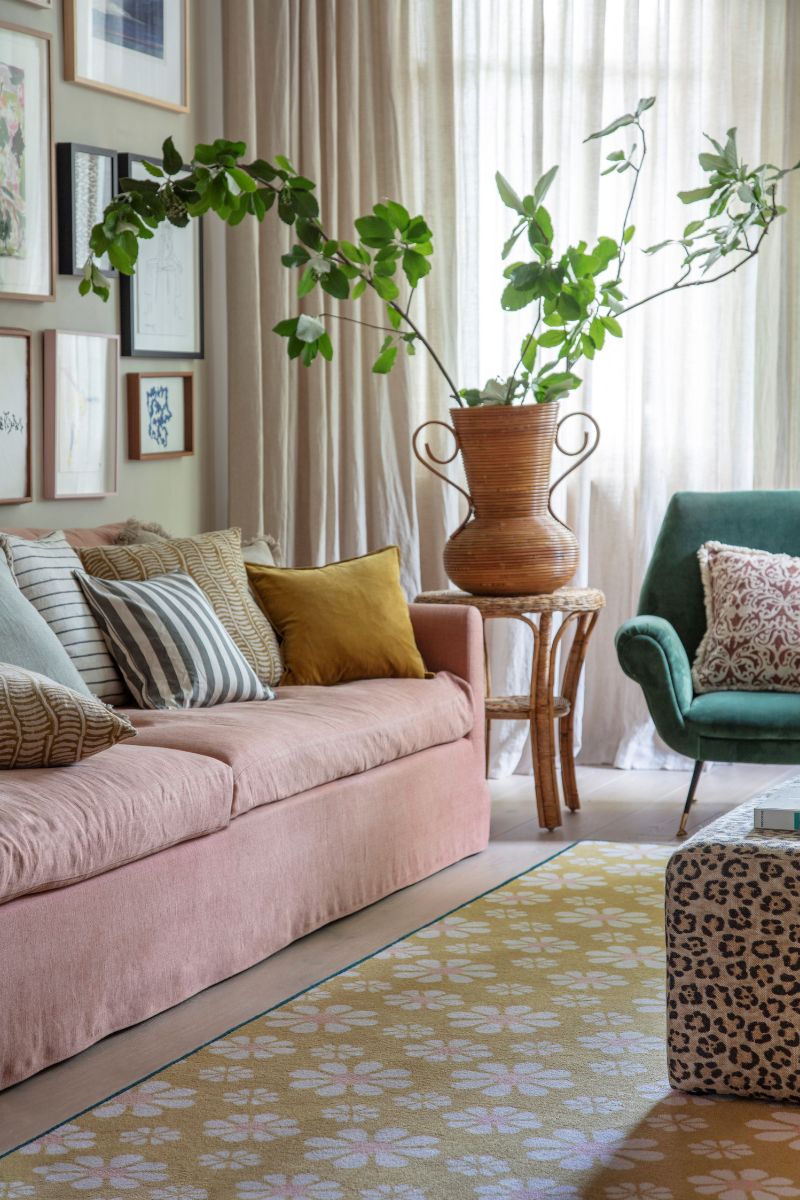
The Living House designers always recommend using plants as a finishing touch. from the best houseplants for a bedroom to plants that help with condensation, there's a plant for all spaces.
A pothos hanging from the ceiling in a macramé planter can accentuate the room's height and add a rustic, boho vibe. A fiddle leaf fig planted in a wide terracotta pot will bring texture, shape and vitality, and a monstera plant will give a subtle nod to 70s-inspired interior design.
If you're a serial houseplant killer, we suggest trying one of our easy-maintenance houseplants or going for high-quality faux autumn and winter botanicals by Abigail Ahern. Remember, if in doubt, add a plant. Because it'll never make things worse.
FAQs
What are the biggest mistakes people make when decorating?
Aside from choosing paint before considering the layout and functionality of the room, another key interior design mistake to make is misjudging furniture. "Sofa mistakes are most common," says Catherine, interior designer and co-founder of The Living House. "Sometimes, clients don't measure properly or they choose a colour that doesn't work with the rest of the space.
"They often complain that their sofa isn't comfortable or the right size, and as it's a really important, hardworking item of furniture, it's something you want to get right."
Sofa-in-a-box companies are incredibly convenient, but it's worth going and sitting on a sofa before purchasing to ensure you're totally happy with the height, fabric, depth and overall comfort levels.







